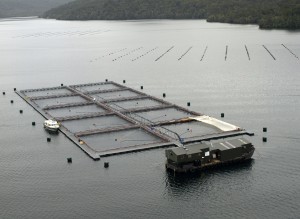As a continuation of my food series, I would like to take a look at alternative food provisioning networks, via a review of Italian anthropologist Cristina Grasseni’s new book ‘Beyond Alternative Food Networks’. The book describes strategies used by groups to avoid interaction with the industrialized food mechanism, much of which I have debated in the other posts in the series.
Grasseni’s book gives an account of the inner workings of Italy’s solidarity purchase groups. These groups are informal collections of families, working together to procure food and other products from mainly local producers in order to reclaim sovereignty over their purchasing.
The model is extremely innovative, both in terms of its positive health and social benefits and financial implications. Groups make agreements with local farmers to buy their produce in return for guarantees regarding production processes (organic, tax paid, worker’s rights etc). The producer benefits because they can sell their produce directly to the consumer, and so is not held hostage by distributors and retailers. The consumer gains because they know who has produced their product, how, where and under which conditions. Group members can buy hygiene and baby products, detergents and a range of household goods through the network, offering a source of income to specialist socially and environmentally friendly producers.
Although this system might sound like a Utopian fringe, Grasseni points out that the groups spend about 80 million Euro a year in Italy alone (about $110 million), in effect moving this sum from the regular economy into this more direct exchange. The number of groups is in rapid expansion and has led to the creation of networks of groups, national conferences and organizations and even the creation of ‘districts of solidarity economies’.
The book argues that this alternative economics structure is trust based, with all parties within the transaction knowing and directly relating with the others. Several organizations work entirely within the structure providing goods only for the groups. The following examples of the dairy and the shoemaker really show the potential of the model.
In 2009 a local dairy farmer converted to organic production in order to supply these groups. This involved downsizing and specialization, but several years later the farm found itself in financial difficulty. Members of the groups ran an email campaign and in about a month raised 150 000 Euro (more than $200 000) to bail the dairy out. The money was passed on, the dairy survived and now produces milk and cheese for the very same groups that saved it. With the banks no longer involved, the farmer can sell the produce at retail prices directly to the groups and make enough money to live and repay the initial bailout loan.
The story of the shoemaker is similar. After being forced into downsizing the shoemaker was left with capability but little market. He withdrew from the mainstream economy and now provides made to measure shoes through the network. There is a traveling catalog, so once found you can choose a style and size and order your new shoes that then arrive through the post. They are also sold through a network of non profit organizations that have relationships with the groups.
This book certainly leads the reader into a new way of thinking about food production. The cover contains a quote from Peter Utting, Deputy Director of the united Nations Research Institute for Social Development. He states that “Grasseni provides fascinating insights into how alternative approaches to food provisioning can transform social and economic relationships in ways that bode well for contemporary global challenges of sustainability, social justice and rebuilding human relations built on trust”.
If you would like to learn more about these alternative approaches, take a look at the following links:
Rete Gas is the Italian national GAS network.
The Food Alergy and Anaphylaxis Network has a dedicated page.
The Grassroots Innovation website also has plenty of information.
Beyond Alternative Food Networks by Cristina Grasseni is published by Bloomsbury and available through Amazon via the link above.
I would like to add that although this review is not paid, I do know the author very well. I am also a GAS member.






